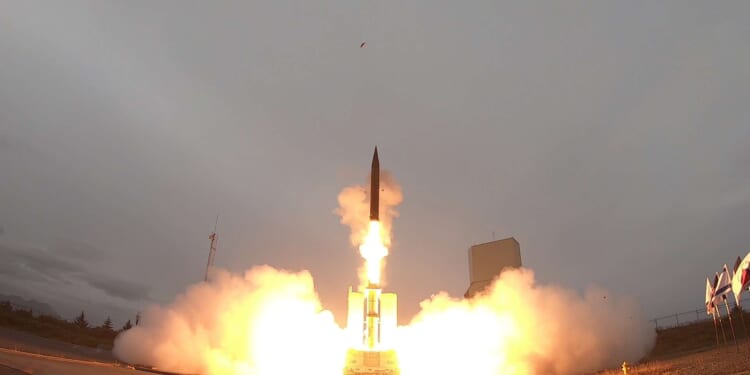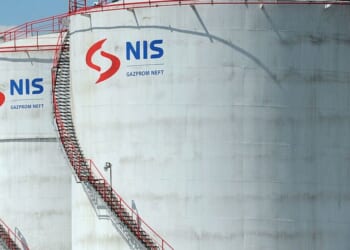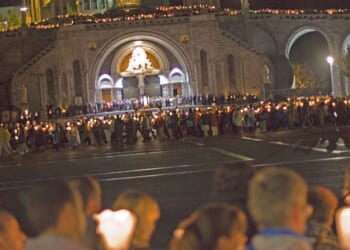President Ronald Reagan’s Strategic Defense Initiative, nicknamed Star Wars, promised to create a missile defense system so effective it would eliminate the threat of nuclear war forever, at a cost of around $70 billion. As it turned out, the technology just wasn’t feasible. And the Soviet Union figured out how to overwhelm the missile defense system at five percent of its cost. Reagan’s successor, George H.W. Bush, scaled Star Wars down to a much more modest program called Global Protection Against Limited Strikes, emphasis on limited.
Now President Donald Trump is promising that, with today’s technology, he can create an impenetrable missile shield for $175 billion. But the Congressional Budget Office (CBO) estimated in May 2025 that the program could actually cost up to $542 billion over two decades. And according to independent analysis, the CBO may actually be underestimating the cost sixfold. Todd Harrison, a senior fellow at the conservative American Enterprise Institute, has calculated a $3.6 trillion price over two decades. Harrison and other experts spoke to The Washington Post for a bombshell report published on Wednesday.
The Golden Dome is designed as a “multi-layered” system. One layer would be ground-based missile batteries. Another would be a constellation of satellites orbiting the Earth, ready to shoot down incoming missiles from above. That latter part was also part of the Star Wars program. Proponents say that lower launch costs today—thanks, Elon Musk—make it more feasible today, according to The Washington Post. Harrison, however, estimates that it would take 950 satellites per enemy missile. The American Physical Society puts the number at 400 interceptors for a lower-end North Korean missile and 1,600 for a higher-end North Korean missile.
North Korea is estimated to have 50 nuclear weapons. And that’s the lower end of the threats that the Golden Dome is supposed to counter. China has hundreds of nuclear weapons, and Russia has thousands. “You need so many more interceptors than missiles, it becomes operationally impractical,” Harrison told the Post.
The Golden Dome program could also scale up ground-based missile defenses. The U.S. military maintains 44 interceptors at a base in Fort Greely, Alaska, designed to launch an “exoatmospheric kill vehicle” that would intercept an incoming ballistic missile in space. But even tests conducted “under scripted conditions and designed for success” show a 55 percent success rate for those interceptors, the American Physical Society reports. The Pentagon has been quite sensitive about that fact. After the recent movie A House of Dynamite depicted U.S. interceptors failing, the Missile Defense Agency wrote up a memo claiming that the system is 100 percent foolproof.
Israel’s own ballistic missile defenses, Arrow and David’s Sling, have shown a higher success rate. (The name “Golden Dome” is a homage to the Iron Dome, the Israeli system for intercepting smaller rockets and artillery, which is often used as a shorthand for all missile defenses.) The few exoatmospheric interceptors that Israel launched against the October 2024 attack from Iran had a 100 percent success rate, while lower-level missile defenses ranged between 65 percent and 80 percent success, according to a report by Sam Lair, a research associate at the James Martin Center for Nonproliferation Studies.
But the circumstances were not exactly reassuring for U.S. missile defense. Israel was facing “favorable conditions” that the United States would not enjoy in a war with Russia or China, warns Lair. Iran did not use decoys or radar jammers, as Russia or China would be likely to deploy. And Israel had the ability to choose which missiles to intercept and which ones to let fall harmlessly in open areas. Indeed, an intelligence official told NBC News that the effectiveness of Israeli missile defense fell from 90 percent to 65 percent during the later Twelve Day War, which had a sustained back-and-forth combat and gave Iran a chance to adapt.
More fundamentally, Israel and America face very different missile defense problems. As The Washington Post points out, the Arrow, David’s Sling, and Iron Dome are defending a territory the size of New Jersey against missiles with small conventional warheads. The Golden Dome would have to defend every city in the United States against missiles with multiple nuclear warheads. Even a 90 percent interception rate would not be enough.
There is also a question of whether trying to build a missile shield is a good idea to begin with. America’s best defense against nuclear war so far has been mutually assured destruction, the principle that any country launching a nuclear attack would be committing suicide. During the Cold War, trying to build a missile defense system was actually considered an escalation, because it would undermine everyone else’s ability to retaliate for a first strike.
When President Lyndon B. Johnson discovered that the Soviet Union was building a missile defense system around Moscow in 1972, he warned Soviet Premier Alexei Kosygin that the U.S. would have to massively increase its offensive capabilities. “We would thus have incurred on both sides colossal costs without substantially enhancing the security of our own peoples or contributing to the prospects for a stable peace in the world,” Johnson wrote. Both sides eventually signed the Anti-Ballistic Missile Treaty, severely limiting their ability to build missile defenses from 1972 to 2002.
Today, China and Russia are issuing the same warning in reverse. The Golden Dome “calls into question the effectiveness of efforts to maintain predictability in the nuclear and missile sphere” and “has high potential to provoke a regional and global arms race,” the two governments warned in a joint May 2025 statement. And they emphasized a principle that they believed America had forgotten: “a nuclear war cannot be won and must never be fought.”

















